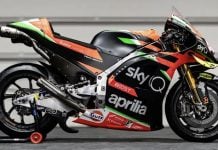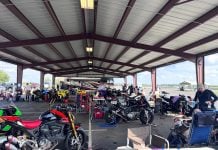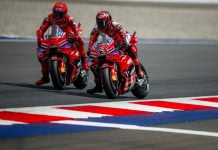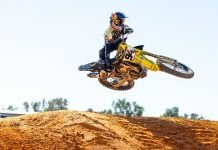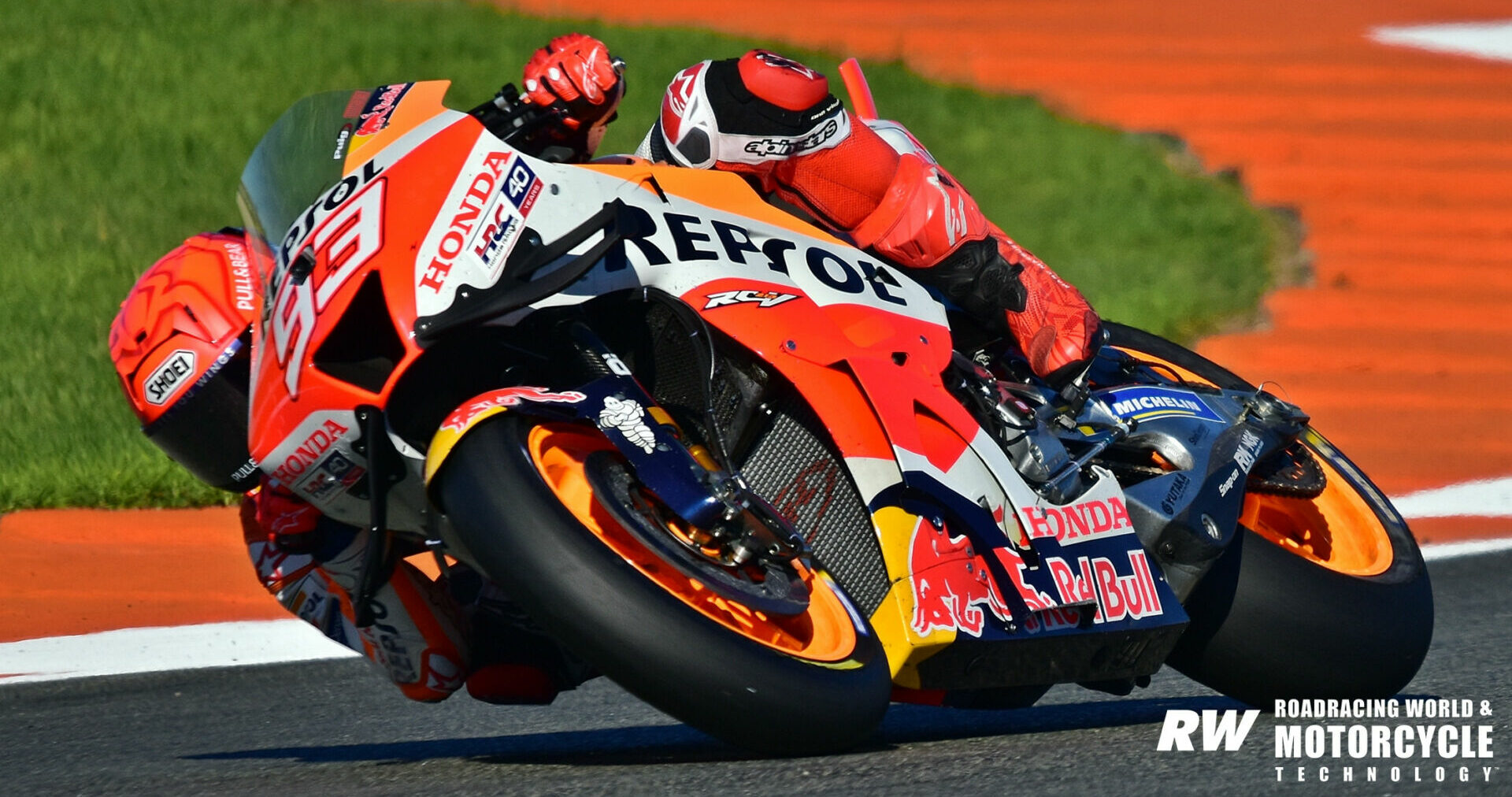Copyright 2022, Roadracing World Publishing, Inc.
First Person/Opinion:
by Michael Gougis
It’s always worth arriving at the track and getting out onto pit lane as early as possible in the morning of a MotoGP weekend. The mechanics roll the machines out of the garages just after the sun comes up, it seems, on rear wheel stands. They fire them up, bring them to full operating temperature, run the bike through all six gears, then shut them off and roll them back into the garage and slam the door. The observer on the spot can get very, very close to the bikes, as the mechanics are busy and the people who like to shoo you away from the machines haven’t arrived at the track yet.
When the HRC mechanics rolled Pol Espargaro’s bike out of the garage on Sunday morning at Valencia for the 2022 season-ending race, my first thought was, why bother?
Espargaro’s bike was entirely different than the one Marc Marquez was racing. They both bore the RC213V logo, but the differences between the two were so striking that if these were production machines, the company probably would have come up with different model names for them.
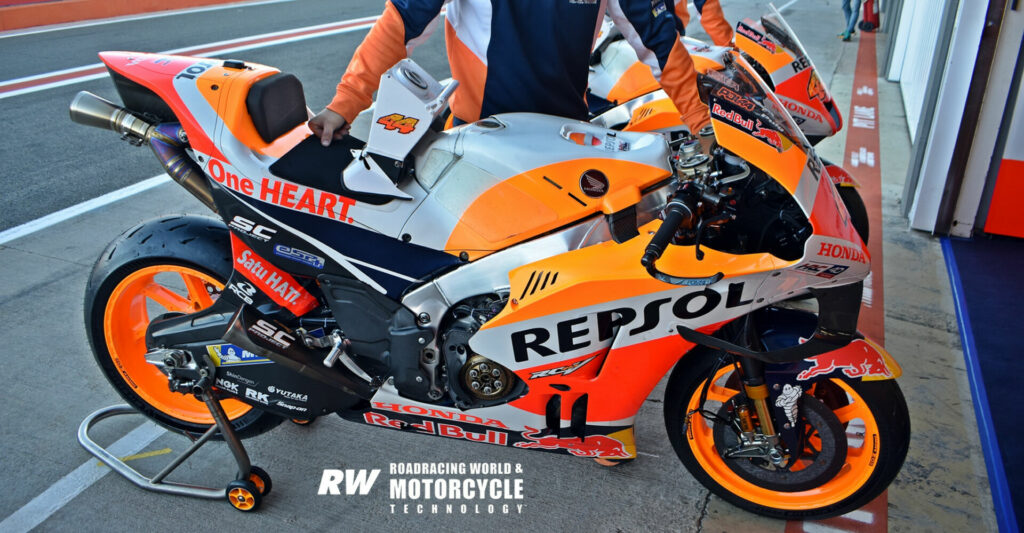
The differences that could be spotted with the naked eye alone included a different frame, different swingarm, different front wings, different aero on the tailsection and different aero on the fairing lowers.
The machine Marquez rode had a chassis with welds along the aluminum spars. The fairing had ducting on the lower leading edge to move air toward the center and bottom of the bike. It had vertical fins (the “stegosaurus” fins) on the tailsection. It had an aluminum swingarm.
Espargaro’s bike had a carbon swingarm, a different set of front wings, no fairing ducting, no welds on the frame spar and no vertical stabilization fins. And elsewhere in Honda-land, Takaaki Nakagami’s RC213V had the Marquez front wings and chassis as well as the vertical stabilizers, but a carbon swingarm and no side ducting.
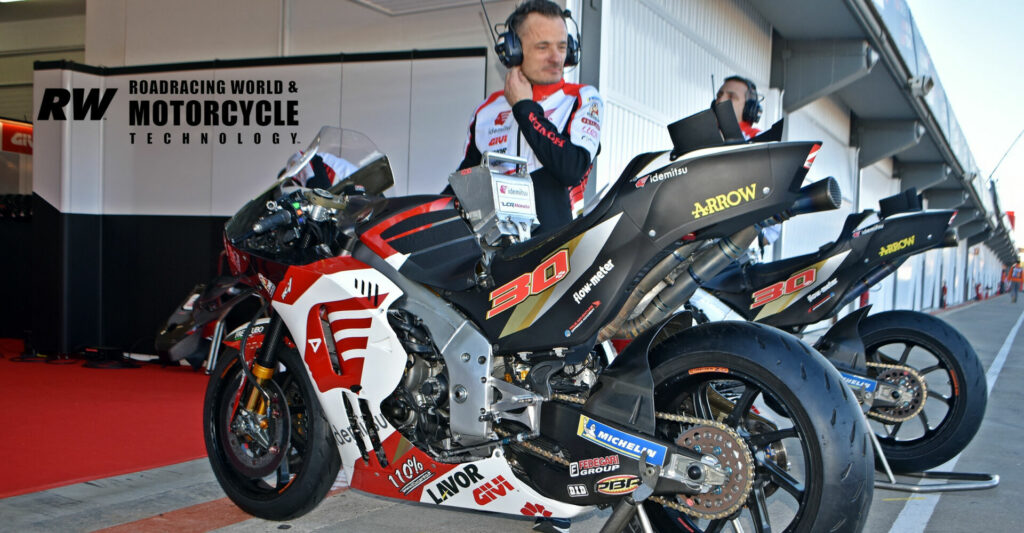
The reason that the wide disparity in configurations struck me as so unproductive was something that has been said multiple times about Ducati’s MotoGP effort in 2022–data sharing works.
It’s something that seems fundamental to success in the category nowadays, but it goes deeper than trying to determine which tire to run on any given Sunday. And what it hints at is that while innovation is important, optimization may be even more critical.
Early in the season, the factory Ducati effort was struggling, upstaged by the Gresini satellite team–or, specifically, by the very rapid Enea Bastianini on last year’s Desmosedici. Bastianini’s bike, the GP21, was well sorted, with a season’s worth of data available, allowing the team to get the bike dialed in quickly.
The factory riders, Francesco Bagnaia and Jack Miller, were struggling, in part because they had rejected the factory’s 2022-spec engine, and the engineers quickly settled on a powerplant that was a combination of 2021 and 2022-spec parts. But that decision came late in the day, so to speak, so during the first few rounds, the factory team was still trying to optimize the new bike/engine combination when the season started in Qatar. Bagnaia complained that he never rode the same bike twice all weekend, that the electronics were off, that other settings were off. In contrast, Bastianini said that all his team had to do was “put fuel in the bike” and let him ride it.
One of the things I noticed during the season was that when the factory Ducati team tried something new and it worked, it was quickly distributed to the other Ducati teams. Looking at the Ducatis in the cold post-dawn air on pit lane in Valencia, the uniformity was striking. Only Luca Marini had a bike without the tail fin stabilizers–and that was on only one of his two machines. All of them had the latest-spec fairing ducting. Paint them all in primer, and you’d be hard-pressed to pick the one ridden by Miller from Jorge Martin’s bike.
The increasing complexity of a MotoGP racebike means that there are more and more ways to be slightly off when it comes to the optimal set-up for the bike when the lights go out. The more data you have, the better chance you have of making the right decisions on set-up, electronics, aero, etc. Data analysis has gotten more and more important, especially considering how hard the engineers are working for even incremental gains. How much did Yamaha suffer in 2022 because Franco Morbidelli was still physically–if not mentally–recovering from his shattered knee; Darryn Binder was out of his depth; and the soon-to-be-retiring Andrea Dovizioso had one foot out the door?
It stands to reason that the closer a given brand’s racebikes are in specification, the more relevant the data is. Looking at the similarities of the Ducati machines, it seems more likely that the engineers could compare and contrast the data from the Prima Pramac, Gresini, VR46, and factory Lenovo squads because all of the bikes were running in similar configurations. They didn’t have to factor in whether one of the bikes was running without tail stabilizers or fairing ducting. They didn’t have to account for one machine running a carbon swingarm and another using an aluminum swingarm. Other than Johann Zarco’s bike, which was used for testing purposes when new parts became available, the data from one bike was generated by a machine that was configured like the other bikes.
Innovation is critical. But with the ever-tightening rules, maybe the route to the front isn’t just innovation, but optimization of what you’ve got to work with.


